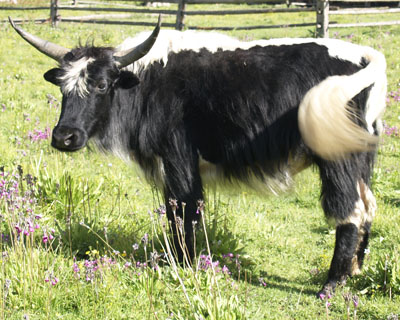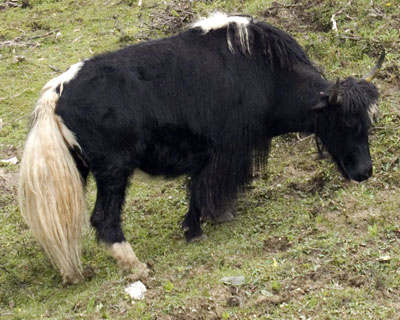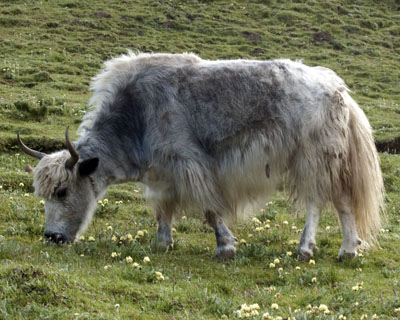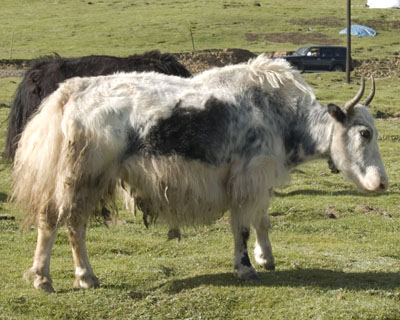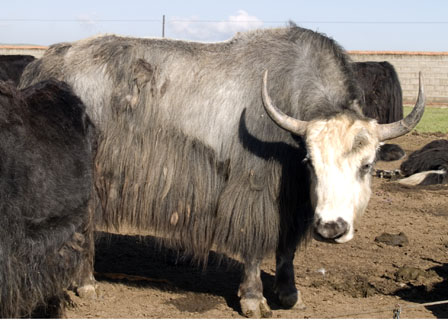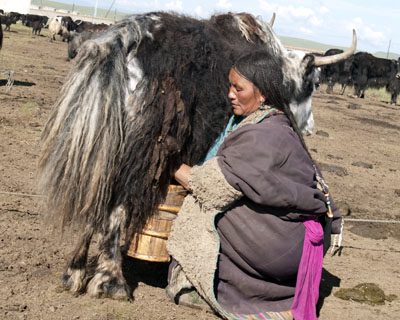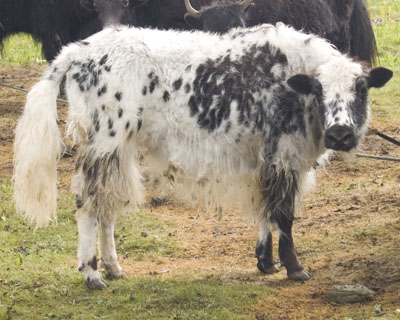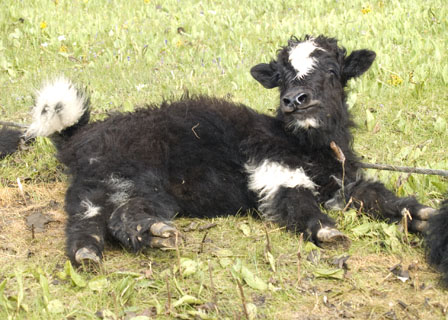Tibetan Yak Colors
| Yak Home | Tibet Photos | Ranch Wildlife | Yak For Sale | Breeding | Bull Pen | Shows | Links |
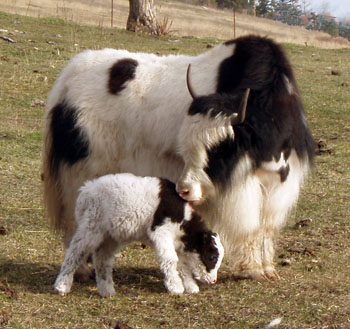 |
Royal Yak Piebald colored yaks carry a full copy of the white gene. Most Royal Yak are very plain in appearance; with little wool and long horsy heads. We have been working on improving Royal Yaks for several years and have some exemplary females in the herd. In 2009 we bred Trim Yak Bull M049 Chewbacca to our Royal cows, from that we kept a really wooly heifer and a promising bull calf for our foundation herd. High Prairie Yaks took three Chewbacca Royal heifers. |
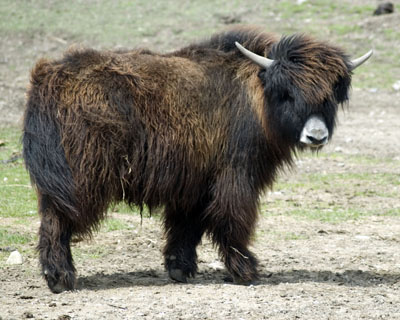 |
Native Black Yak or just Black Yak Wild yaks are homozygous to this color, black with a gray muzzle. It is my belief that all other yak colors come from cattle DNA. A current USDA yak genome study may shed light on this. The woolliest yaks are Blacks and as far as we can tell the woolliest yaks in North America trace back to a group from the Toronto Zoo that was dispersed, with some making it to the US. Queen Allante is from this line. At Spring Brook Ranch we use Blacks to breed wool into other colored yaks. There are two hair types on Blacks; kinky and silky. The kinky style readily felts and is difficult to groom, it tends toward a bronze color. Silky has less crimp, is glossy black and is less prone to matting. According to the reference book, The Yak, there is a minor phenotype in China called the "long-hair-forehead yak". I believe that it is this genetic base that we are pulling out when selectively breeding for extreme wool. |
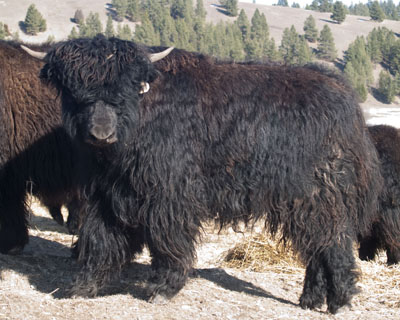 |
Imperial Yak Imperial yaks are all black, including the muzzle. Many Imperials have a silky coat; glossy black and less prone to matting. Imperials also tend to have black tongues. The yak heifer in the picture to the right is showing exceptional wool at a young age. An indicator that we look for in yak calves is lots of wool on the legs, especially down low. If you can't see their hooves then they will probably remain really wooly when mature. |
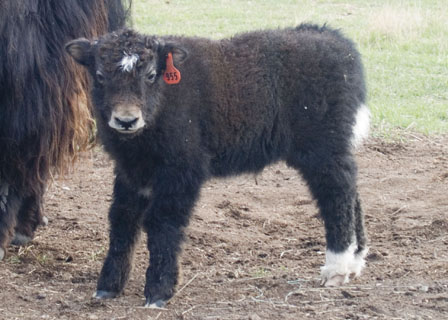 |
Black Trim Yak A cross between a Black and a Royal, a Black and Black Trim or two Black Trims. Black Trim yaks show white to some extent on the forehead, hind feet and/or tail. Some trims show almost no visible white other than a few hairs. A Black bull on a Royal cow will produce 50% Black calves and 50% Black Trim calves. A Trim bull on a Royal cow will produce 50% Trims and 50% Royals. |
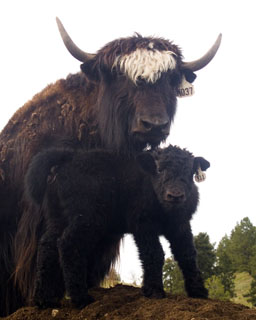 |
Imperial Trim Yak A cross between an Imperial and a Royal or two Imperial Trims. Like Black Trims they can show white on the forehead, hind feet and/or tail. In addition they can also have a white streak on the muzzle like this yak cow shows. Notice that her calf is an Imperial like his sire. |
Yak Colors from Tibet These are color phases that are not found in the US |
This is probably a Dzo or a Dzomo, a cross between a yak and a domestic cow. |
This is another variation of the Imperial lineback coloration. She shows white on the hump but not a full dorsal stripe. Notice that she also shows white on the forehead and hind socks like Black Trims and Imperial Trims as seen in the US.
|
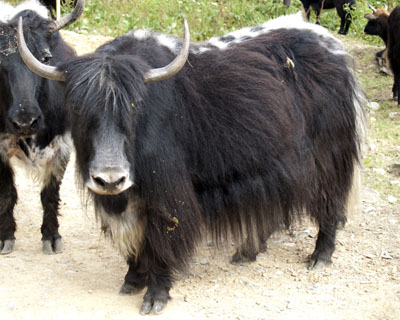 Lineback Black Yak in Tibet This yak cow has a gray nose but also shows white on the chest and her dorsal stripe has black spots. Notice that her hind feet do not show white like Black Trims in the US do. |
|
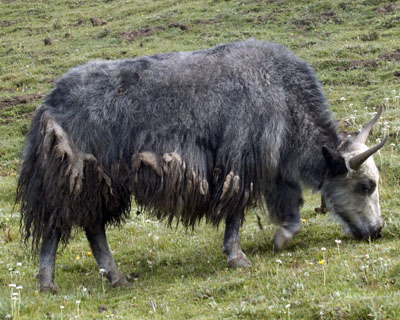 How about we call this a Gray Yak Cow? She was spotted in the same area as the Brindle cow pictured above and probably hails from the same base gene pool. I like her lighter colored face. |
Also from Amdo, we saw lots of White Yaks with various degrees of black spots or patterns. |
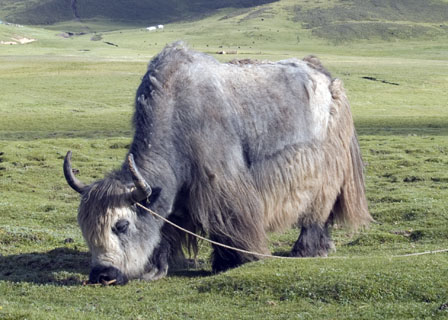 Gray Yak Bull |
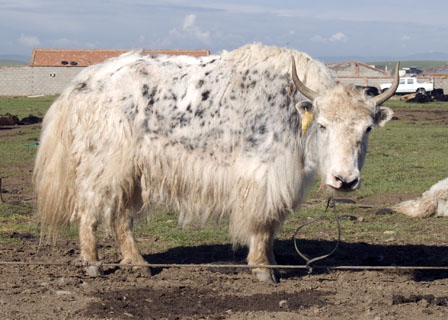 White Yak Cow with Spots |
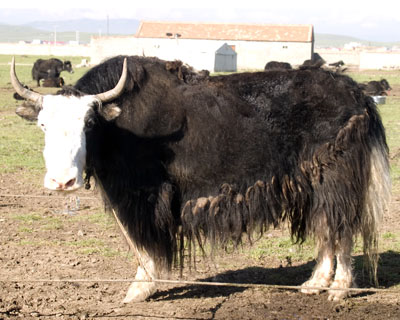 Bald Faced Black Yak Cow |
|
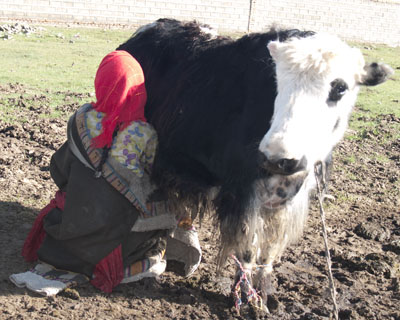 A naturally polled (no horns) yak cow being milked |
|
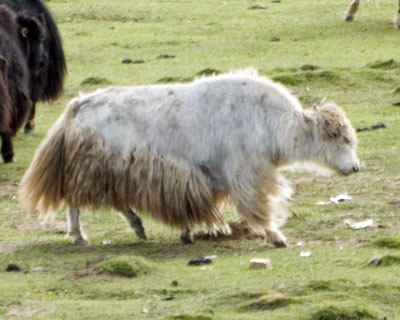 Polled white yak cow |
|
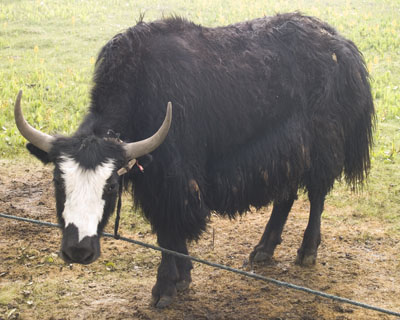 Notice that this Imperial Trim yak cow has white only on her face and not on her tail or hind legs. |
|
Copyright 2010, Jim Watson, All Rights Reserved |
